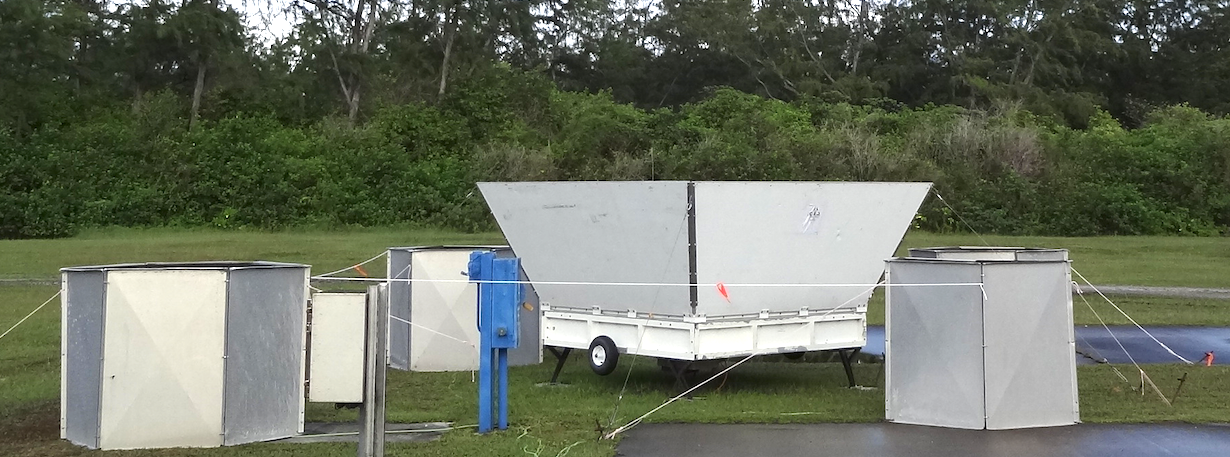915 MHz & 1290 MHz Wind Profiler
The Atmospheric Profiling Group (APG) operates boundary layer wind profilers as part of the Integrated Sounding System (ISS) (Parsons et al 1994). They can be deployed at fixed land sites, or as part of MISS (Mobile ISS) for rapid deployment, or at sea on research ships. They are vertically pointing UHF radars designed to detect back-scatter from clear-air turbulence and precipitation, using these signals to measure both wind as a function of height, and precipitation fall speed spectra as a function of height. Using the RASS (Radio Acoustic Sounding System) extension, the profilers can also measure the virtual temperature profile.
We have three 915 MHz profilers and one 1290 MHz profiler. These are standard LAP3000 boundary layer wind profilers commonly used for lower atmospheric research and monitoring, and have been deployed at over 50 field projects since 1992. They were originally developed at the NOAA Aeronomy Lab in the 1990s (Ecklund et al, 1990), and manufactured by Radian Corp, then Vaisala (now by Scintec and Radiometrics). They use the DBS (Doppler Beam Swinging) technique to make horizontal wind measurements every 15 - 30 minutes, with vertical wind measurements available every 1 - 2 minutes. The profilers use a mix of POP4 and LapXM software for data collection, depending on the application. Data is usually post-processed using the NCAR/RAL NIMA (NCAR Improved Moments Algorithm) to remove artifacts such as clutter, interference and aliasing (Morse et al 2002).
We also operate the 449 MHz Modular Wind Profiler which is capable of more rapid wind measurement and higher height coverage - please see this link for more information on that system.
